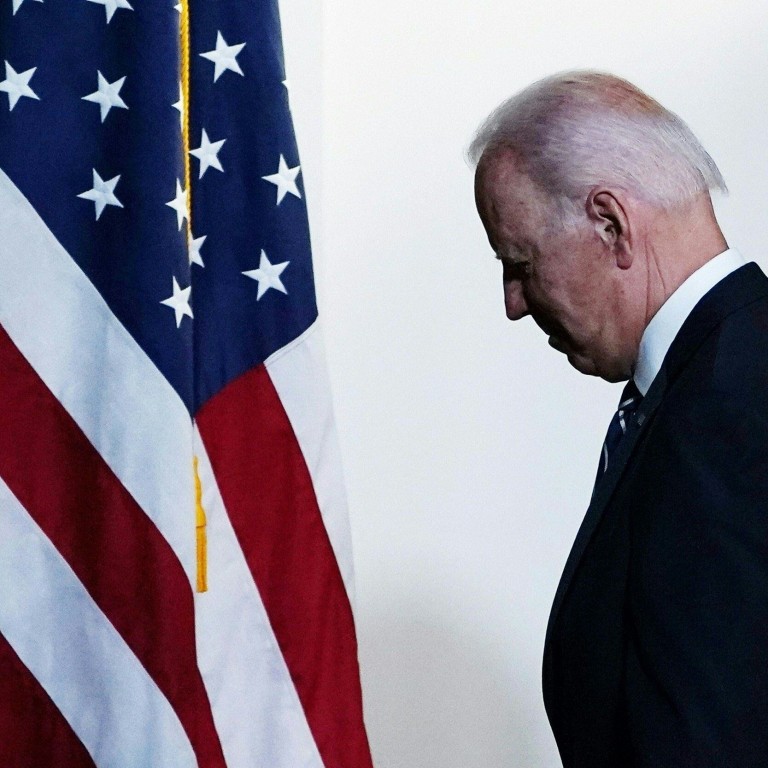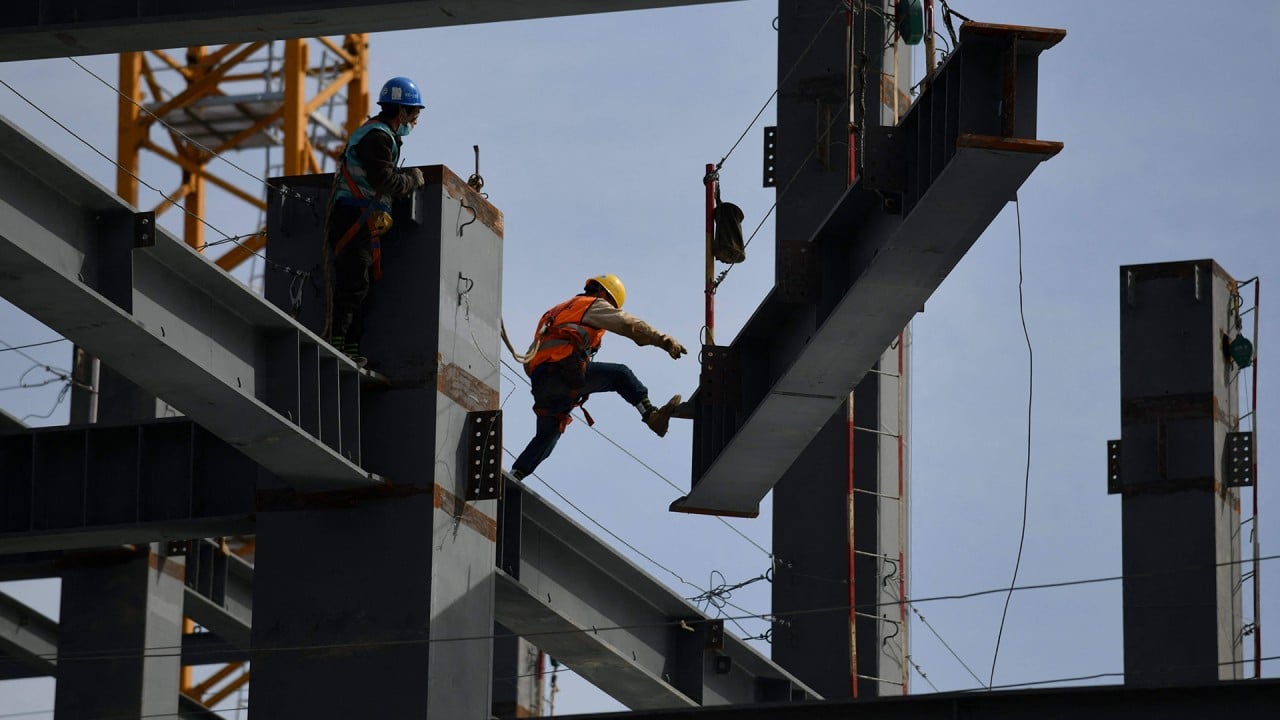
Why the US-China contest will be fought in the heartlands of America
- The US demonises China, but underestimates the real competition: the winner will be the society that takes better care of its bottom 50 per cent
- Biden’s priority should be to jump-start the American economy by cooperating with other strong and dynamic economies, including China
The real danger of this demonisation is that it leads even thoughtful Americans to believe that an open society such as the US has many natural advantages over a closed, autocratic system such as China’s. By framing it in this way, Americans cannot even conceive of the possibility of losing out to China, meaning they are seriously underestimating the challenge they face.
Having recently experienced the most painful century in their history – the century of humiliation unleashed on China by Western and Japanese forces – the Chinese believe that the American assault was the last effort by a Western power to keep China down and prevent it from occupying its rightful place in the world.
Joe Biden’s America needs to learn from the world, not vice versa
The biggest conceptual mistake that American policymakers are making is a simple one. They assume that their strategic competitor is the Chinese Communist Party, which explains the American confidence that American democracy will triumph. Yet the strategic competitor of the young American republic is a 4,000-year-old civilisation.
China is not challenging American prosperity. It is not a threat to American security, nor is it a threat to American values. On values, this would be true if China were either threatening to export its ideology to America, or threatening to undermine the electoral process there.
Neither is happening. Yet, an amazing number of Americans – even those who are thoughtful and well informed – believe China is on a mission to undermine American values.
This belief may be the result of two major misconceptions about China that have penetrated the American subconscious.
The first is that since China is run by a communist party, it must, like the former Soviet Union, be on a campaign to prove that communism is superior to democracy. Yet Americans also believe in empirical evidence, which shows that China stopped supporting its fellow communist parties decades ago. Its real mission is to rejuvenate Chinese civilisation, not waste time exporting communist ideology.
Here’s a perfect example of America’s total ignorance of its adversary. The most basic fact that Americans should know about the Chinese people is that they do not believe anybody can be Chinese in the way that Americans believe anybody can be American. The Chinese believe, quite simply, that only Chinese can be Chinese. And they would be puzzled if anybody else tried to become Chinese.
Why the Quad doesn’t spell the future of Asia’s relationship with China
Actually, the real Chinese goal is to improve the livelihood of the Chinese people. Right now, the per capita income of the 1.4 billion Chinese people is about US$10,000, compared with US$65,000 for the 332 million American people.
If the Chinese succeed in improving their per capita income to US$17,000, just over a quarter of that in the US, their economy will become larger as their population is four times larger.

02:01
China’s economy expands record 18.3 per cent in the first quarter of 2021
The real competition is perforce economic. If this is true, there are five simple, logical steps the US can take to enhance its economic competitiveness.
Step one would be to slash its bloated defence budget by half and reinvest the money into research and development. Step two would be to completely withdraw all its defence forces from the Middle East and stop fighting unnecessary wars, which have cost American taxpayers US$5 trillion since September 11.
In 2009, the size of China’s retail goods market was US$1.8 trillion, when America’s was US$4 trillion. In 2019, after three years of former president Donald Trump’s economic assaults on China, its retail goods market had grown to US$6 trillion, compared with US$5.5 trillion in the US. A basic rule of strategy is that it’s a mistake to continue fighting on a front where one is losing.
Why ‘the India way’ may be the world’s best bet for moral leadership
Step four would be to rejoin the Trans-Pacific Partnership free trade agreement that former president Barack Obama had wisely initiated to ensure the East Asian economic ecosystem, the largest in the world, would not be centred on China.
Step five would be to match China punch-for-punch by signing free trade agreements with every country or region it has secured a deal with. For example, one important arena for US-China competition will be Southeast Asia, where there are still major reservoirs of goodwill towards the US among its more than 675 million people.
These five steps would terrify the Chinese. Suddenly, Beijing would have to deal with a thoughtful and worthy geopolitical competitor.
However, the Chinese need not worry. The sad truth is that not even one of those sensible and rational steps is politically feasible within America. Beijing is pursuing a carefully thought out, long-term strategy that is successful both in improving the livelihood of its people and in integrating its economy with most countries in the world, giving the world a stake in China’s prosperity. The US doesn’t have a matching comprehensive strategy.
Here’s another statistic to reflect on. Brazil is geographically closer to the US than China. In 2000, Brazil would take a year to export US$1 billion worth of goods to China.
Now it does so every 72 hours. In contrast to the bottom 50 per cent of the Chinese people, who have just experienced the best 40 years of human development in 4,000 years of Chinese history, the bottom 50 per cent of the US population has experienced three decades of economic stagnation.
This has created – as the Nobel economic laureate Angus Deaton has documented – a “sea of despair” among the white working classes in the US, leading to lower life expectancy, increased infant mortality, greater opioid addiction, higher suicide rates, and so on.
This is, probably, the most important point that American strategic planners should reflect on: at the end of the day, the outcome of the geopolitical contest between the US and China will not be determined by the number of aircraft carriers or nuclear weapons. Instead, it will be determined by which society is doing a better job at taking care of its bottom 50 per cent.

s of now, China is leading by a mile, just as the US was clearly in the lead against Soviet society in the Cold War. Indeed, the first indication that the Soviet Union was losing came from its human development statistics: lower life expectancy, increased infant mortality, greater alcohol addiction, higher suicide rates!
Today, by contrast, as Stanford University psychologist Jean Fan has documented: “In contrast to America’s stagnation, China’s culture, self-concept, and morale are being transformed at a rapid pace – mostly for the better.”
The real contest between the US and China will, therefore, not be fought out in any external arenas. It will be fought out in the heartlands of America. Biden’s main priority should be to eradicate the economic “sea of despair” among the white working classes.
Only this will prevent the return of a Trump, or a Trump-like figure. And only this will regenerate long-term confidence in Biden’s claim that “America is back”.
All this leads to the final paradox: the best way to jump-start the American economy is to work closely with the other strong and dynamic economies of the world, especially the country with the largest middle-class population of the world, namely China.
If American policymaking was made by a sober, rational, thinking class of practitioners, this would be a logical, indeed commonsensical, solution to the serious internal divisions in the US.
Kishore Mahbubani, a Distinguished Fellow at the Asia Research Institute at the National University of Singapore, is the author of Has China Won? The Chinese Challenge to American Primacy (2020). This is an edited excerpt from The National Interest article entitled “Can America lose to China?”.

